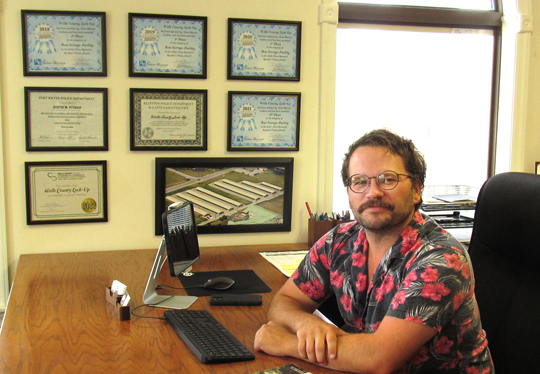Bluffton resident spurs change in Indiana tax laws, leads to nation’s first property tax assessment victory for self storage
Editor’s Note: Wells County businessman Brandon Harnish’s property tax appeals in 2021 were well documented in the News-Banner, but his efforts in Indianapolis to successfully address what the state legislature eventually came to recognize as problems with the business property tax assessment process are largely unknown to his hometown.
“The state legislature didn’t create a special interest carve-out for the self-storage industry,” Harnish told the News-Banner. “Rather, they used an existing state statute for apartment complexes to bring self-storage assessments in line with other commercial property types. Indiana’s property tax must exclude business-intangible value, which in some counties wasn’t happening for self-storage facilities.”
Harnish’s efforts drew the support of the Self Storage Association, a national trade association. His story was featured in the August edition of the SSA’s magazine. It is reprinted here with the organization’s permission.
By Mark Wright
Of Indiana’s nearly seven million residents, about 28,000 of them live in Wells County, a bit over 10,000 of whom are in the county seat of Bluffton, which is nestled along the Wabash River in the northeastern part of the state. Brandon Harnish operates two of Indiana’s 1,100+ self storage facilities, a family-run brand called Wells County Lock-Up, based in Bluffton.
Harnish is a native Hoosier. He began to learn the ropes of running the storage business from his father, Randy Harnish, back in 2010. And until about a year ago, he would have described himself simply as a live-and-let-live small-business owner.

Then, Harnish received a new property tax assessment in early 2021.
“We knew something was wrong when our property was assessed at a value above what it would actually cost to rebuild the place,” said Harnish
His first stop was at his county assessor’s office: “Are you assessing (and taxing) the land and improvements? Or are you assessing (and taxing) the land, the improvements and the value of the ongoing business?”
Harnish felt that when an assessor steps across that line, they’re effectively converting the property tax into what he calls a “quasi-wealth tax.”



